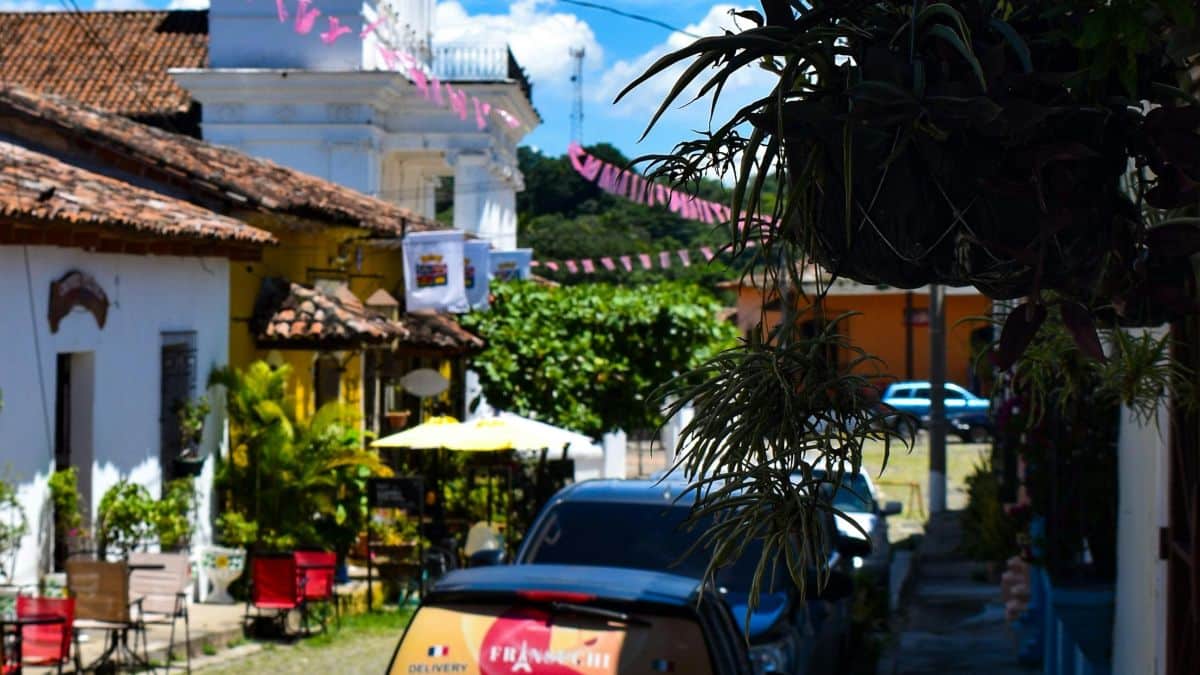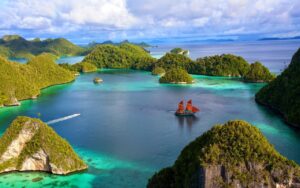Small Towns
8 min readWhether you’re looking for places to visit for a vacation or for a weekend away from the capital, the small towns in Central America offer a different experience for travelers of all types.
The post Our Favorite Small Towns in Central America appeared first on Central America.

Traveling to Central America or living in the region? Whether you’re looking for places to visit for a vacation or for a weekend away from the capital, the small towns in Central America offer a different experience for travelers of all types. In this article we outline some of our favorite small towns and communities around the region.
If you’re looking for something outside the norm, small towns in Central America offer a distinctly different travel experience from the region’s modern capital cities and major tourist hubs. While perhaps lacking the cosmopolitan amenities and infrastructure of their bigger counterparts, these modest communities make up for it with heritage, authenticity, and cultural charm. But before we go further, what is a small town, exactly?
For many Americans, the definition of a small town is one with a population under 40,000 people. In Central America, though, towns of that size would be considered more medium-sized or even large. To us, and it’s all subjective, of course, a small town in any given Central American country has a population of below around 20,000 inhabitants.
So Why Visit?
Small towns in Central American offer a window into the region’s rich cultural heritage and authentic way of life. One of their defining traits is the preservation of long-standing traditions and – sometimes, but not always – colonial-era architecture. Oftentimes it can feel like going back in time when exploring the streets of these communities.
The pace of life is also slower, compared to larger cities. Community bonds are tighter and everyone knows each other. There is a strong sense of civic pride and often a desire to uphold customs and celebrate local feast days and historical events. Small businesses are often run by multiple generations working side-by-side.
Despite the influence of tourism, the economy and daily life often still revolve around agriculture in many of these small towns. Farmers supply produce to local markets. Artisans skilled in pottery, textiles, and woodworking utilize generations-old techniques. Tourist dollars are vital, of course, and go a long way to preserve the history and cultural traditions that are the biggest draws to visitors.
Below, we spotlight a few of our favorite small towns from around Central America. These communities highlight the unique charms that make each country so worth a visit. Visit Got2Go’s website for more information on planning your visit to any of these places.
Belize
Caye Caulker
Caye Caulker is one of the most popular destinations in Belize for visitors seeking a laid-back island experience. This small town is located on a limestone coral island of the same name off the coast of Belize in the Caribbean Sea. Caye Caulker has a motto of “go slow” and retains an unhurried, no-shoes lifestyle that is a major part of its appeal. The main village stretches along a sandy main road lined with small hotels, restaurants, bars, and shops selling locally-produced crafts and clothes. Water-based activities like snorkeling, diving, sailing, and fishing are the biggest draws. The absence of cars and paved roads reinforces the island’s Caribbean charms.
Orange Walk Town
Located in northern Belize, Orange Walk Town is an important commercial hub for the country’s sugar cane and banana industries. Its location along the New River made it a key trade route dating back to the Maya civilization. While lacking major tourist attractions within town limits, Orange Walk offers visitors a taste of quiet, rural life in Belize.
Belmopan
Belmopan is the world’s smallest national capital with a population of only around 16,000. Established in 1970, the city’s compact layout features a semi-circular design with the key government buildings and residential areas radiating from a central point. While not a tourist destination itself, Belmopan can serve as an interesting stopover for those touring the Mountain Pine Ridge area to experience its unique status as a tiny capital city.
Guatemala
Flores
The small island town of Flores is located on Lake Petén Itzá in the northern Petén region of Guatemala. Its colorful buildings contrast vividly against the brilliant blue waters of the lake. While compact, Flores’ streets are lively with shops selling artisanal goods and restaurants offering local cuisine. The town serves as a popular base for visitors exploring the nearby Mayan ruins of Tikal, one of the most impressive archeological sites in Central America. Boat tours on Lake Petén Itzá provide tranquil views back towards Flores’ distinctive skyline.
Livingston
One of Guatemala’s most unique small towns, Livingston is notable for its Garifuna population descended from Caribbean islands. This laidback Caribbean coastal town blends cultures and cuisines, with a distinct Afro-Amerindian influence evident in everything from the music to the food. Livingston’s geographic isolation from the rest of Guatemala has allowed it to maintain its cultural identity.
San Juan de Obispo
Located close to the colonial town of Antigua, San Juan is renowned one of the best places in Guatemala for traditionally woven textiles and handicrafts. The streets are lined with vendors selling colorful clothing, accessories, and homewares proudly made using ancestral techniques passed down over generations. A lively market takes place regularly where vendors from surrounding villages gather to sell their wares.
Honduras
Trujillo
Situated on Honduras‘ Caribbean coast, Trujillo is where Colombus first landed on the mainland of Central America in 1502. Since then, Trujillo has featured throughout Honduran history and features a Spanish fort with cannons overlooking the Caribbean to fend of pirates. It’s also the place where William Walker was executed and buried in 1860. Today, Trujillo is a sleepy coastal town with access to both Caribbean beaches and rainforest national parks.
Coxen Hole
Coxen Hole is the main town on the Bay Island of Roatán, in the Caribbean Sea off the northern coast of mainland Honduras. It’s a bustling place and its vibe reflects a diverse mix of cultures from across the Spanish-speaking mainland, expatriate communities, and Caribbean island influences.
El Salvador
Suchitoto
Suchitoto is one of El Salvador‘s most picturesque colonial-era towns, and is beloved by most Salvadorans. Its historic center features whitewashed buildings with orange-tiled roofs, a beautiful church and park, and cobblestone streets dating back to the 16th century. Nearby Lake Suchitlán provides opportunities for boating and birdwatching. As a cultural center, Suchitoto hosts numerous art shows, concerts and events.
La Libertad
The Pacific coastal town of La Libertad is El Salvador’s closest beach destination to the capital San Salvador. Once primarily a fishing village, the town has evolved into an emerging tourist area known for its beaches, surf breaks, restaurants, and bars. Despite increased development and visitor numbers, La Libertad maintains an authentic local atmosphere anchored by the fishing industry and fish markets.
Juayua
Located in western El Salvador, the town of Juayua rose to prominence due to its longtime “Feria Gastronómica” food festival held each weekend. This lively event celebrates regional cuisines centered around specialties like yuca, loroco, and María Isabellia coffee grown in the surrounding hills and plantations. The colonial-era town center features brightly painted buildings lining narrow streets.
Nicaragua
San Juan del Sur
Once a small fishing village where Mark Twain once stayed, San Juan del Sur is now Nicaragua’s main beach community, but that doesn’t take away from its genuine small town vibe that it still has. Located on the Southern Pacific coast, SJDS attracts visitors with its beautiful bay and access to surrounding beaches ideal for swimming and surfing – mainly surfing. The historic town center features colorfully painted clapboard homes and businesses existing amid the tourists and surfers. There’s still a true, authentic feeling in San Juan del Sur.
San Carlos
The lakeside town of San Carlos serves as a gateway for exploring some of the most isolated parts of Nicaragua. Located on the southeastern shore of Lake Nicaragua, where the lake empties into the Rio San Juan, San Carlos offers boat tours providing access to ecological reserves and islands frequented by sport fishermen, birdwatchers, and nature lovers. Within town, the laidback atmosphere revolves around the lake’s activities.
Costa Rica
Golfito
Golfito is the largest town in Costa Rica‘s southern reaches along the Golfo Dulce near Panama. This former banana export hub for United Fruit Company boasts a unique architectural legacy from its heyday. Today, Golfito draws visitors with its duty-free shopping zone offering discounts on goods. The town provides access to nearby beaches lining the gulf, with many hidden coves only reachable by boat. Popular surfing spots like Pavones and Zancudo lie to the south. North of Golfito, the often overlooked Piedras Blancas National Park protects rainforests along the gulf’s shores. The new Marina Bahia Golfito complex aims to attract tourists and businesses. While no longer a thriving port, Golfito showcases the area’s natural beauty.
Santa Cruz
Located in the center of the Nicoya Peninsula, Santa Cruz is considered the second most important town in Guanacaste after Liberia. It’s a commercial hub for much of the peninsula, but also known for its rich cultural traditions and folk festivals.
Santiago de Puriscal
Santiago de Puriscal is located around an hour southwest of San Jose. It’s a typical small town and regional center in Costa Rica with a range of restaurants, stores, and a central park across from a fascinating ruined church in the center of town. Attractions around Puriscal – or “Puris” as the locals call it – include access to La Cangreja National Park’s hiking trails, a sugar cane trapiche tour, and a chocolate farm tour. Puriscal is also famous throughout Costa Rica for its chicharrones, which are a must-try when in town.
Panama
Portobelo
The Caribbean town of Portobelo was once a vital port city where gold and other treasures were loaded onto galleons bound from Panama to Spain. This historic legacy is still evident in the well-preserved fortifications and ruins of defensive structures like the Castillo de San Jerónimo that allowed Portobelo to withstand pirate attacks. Now peaceful, Portobelo has become popular for its colorfully painted Spanish colonial buildings, churches, and nearby beaches and islands ideal for snorkeling and diving adventures.
Las Tablas
Located on the Azuero Peninsula, Las Tablas is considered the “Folkloric Capital” of Panama. The town is renowned for its lively festivals celebrating Panamanian folklore through music, dance, cuisine, and other traditions. Major annual events include Carnival in February/March and the unique Thousand Polleras festival showcasing the distinctive embroidered pollera dresses. Beyond the festivities, Las Tablas provides a glimpse into the more rural side of Panama.
Volcán
Set in the volcanic highlands of western Panama, the mountain town of Volcán has a cool climate and fertile soil that helped establish the coffee plantations and other farms, growing produce like oranges and potatoes, in this area. Visitors today are drawn to Volcán’s rural charms and access to outdoor activities like hiking, camping, and birdwatching in the surrounding areas of Volcán Barú National Park and La Amistad International Park straddling the Costa Rica border.
What’s Your Favorite Small Town in Central America?
While larger cities, resorts, and capitals in Central America offer plenty of amenities, small towns like those listed above provide an authentic look at local life and cultural heritage. At their core, these communities have an unhurried pace compared to elsewhere, and simple pleasures like sipping coffee at a local café or watching the sunset allow you to slow down. What’s your favorite small town in Central America?



